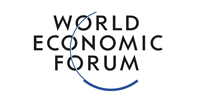
Wind and solar power generation is expanding around the globe at record rates, allowing more people to get their electricity from clean, renewable sources than ever before. This is great news.
And here’s better news: We can do even more. By investing in energy innovations, we can build on the progress we’ve made deploying current technology like renewables, which will help accelerate the transition from fossil fuels to a future of reliable and affordable carbon-free electricity.
This would be an incredible achievement and the most important step we can take to prevent the worst impacts of global warming.
Here’s why: While electricity generation is the single biggest contributor to climate change—responsible for 25 percent of all greenhouse gas emissions and growing every day—it’s an even bigger part of the solution. With clean electricity, we can do more than light our homes and power our grid. We’ll unlock a source of carbon-free energy to help power the sectors of the economy that produce the other 75 percent of greenhouse gas emissions, including transportation, buildings, and manufacturing. Think electric cars and buses; emission-free heating and cooling systems in our homes and businesses; and energy-intensive factories using more clean power to make products.
So, what will it take to reach the goal of zero carbon electricity generation?
We must solve two challenges. The first challenge will come as no surprise. We need to do more to harness the power of the sun and wind. And thanks to falling prices for solar panels, wind turbines, and other technologies, deploying renewable energy systems is more affordable than ever before.
The second challenge is probably less obvious and more difficult. We need big breakthroughs in technologies that will allow us to supply the power grid with clean energy even during windless days, cloudy weather, and nighttime.
Usually, you back up renewable sources with fossil fuels like natural gas that can quickly and reliably provide power when it’s needed. To reach zero carbon emissions, however, we need to find a way to use more clean energy sources as a backstop.
While I wish there could be a single, magic bullet solution to this problem, there isn’t one right now. What will be required in the years ahead is a diverse and flexible mix of energy solutions—a Swiss army knife of energy tools—to support a future of renewable energy generation to meet our needs. Some of these solutions already exist. Others will require more innovation. All can help us make the transition to low-cost, carbon-free power. This is something a growing number of states across the U.S. are recognizing as they adopt 100 percent carbon-free standards for electricity.





